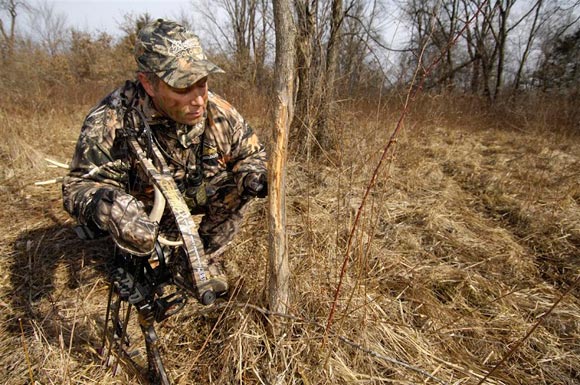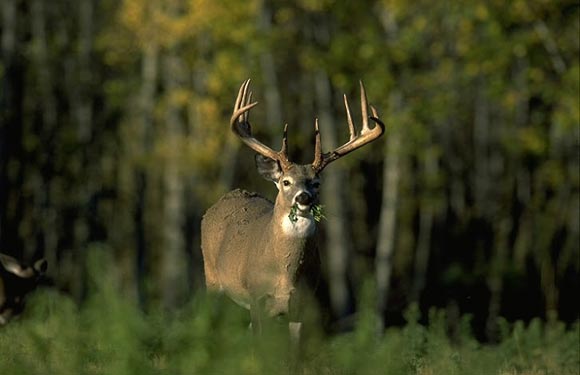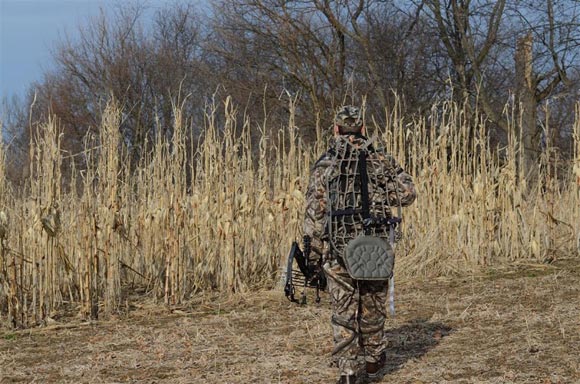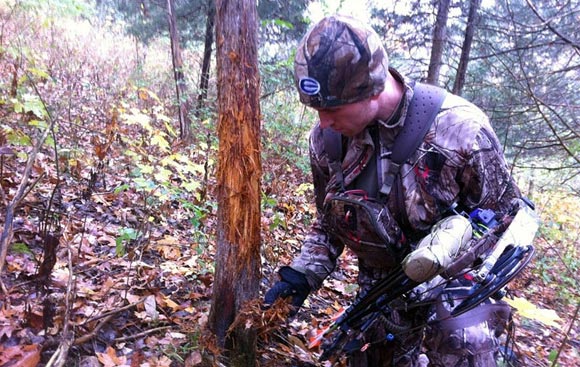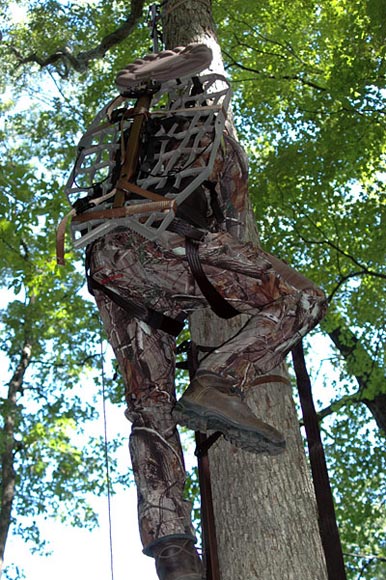LAST UPDATED: May 1st, 2015
Should scouting stop when the hunting season starts? I think not! We all know the excitement that comes from successful scouting during the off-season – especially watching bucks grow through velvet stages in the summer – but how many of us have been disappointed and frustrated when the season starts, and the bucks we’ve been watching all summer seem to vanish into thin air? I know I’ve been there.
Scouting for deer signs shouldn’t end once the season begins. In fact, it should be done regularly in order to stay one step ahead of your prey.
Over the years I have learned to treat summer scouting as a time to inventory and monitor the herd, not as a way to formulate a plan of attack. Things may be different in your neck of the woods, but where I hunt the deer seem to change their behaviors and patterns around the beginning of September – just before our bowhunting season begins. When hunting season starts I treat each and every hunt as a mission to learn more about deer; not simply as an opportunity to make a kill. I can’t tell you how many small things I’ve witnessed during the season that led to more encounters during follow-up hunts. Therefore, don’t put away your trail cameras when the season starts, and don’t set down your binoculars. Use these scouting tools during the season, just as you would for your off-season scouting. The difference between scouting in-season, as opposed to during the off-season, is a matter of detail and priority.
Here are six things I look for when I’m scouting during the season:
Food Sources
My first priority from early September through late October is monitoring food sources. I don’t hunt a lot of agriculture land, and don’t have food plots, so I’m paying very careful attention to natural transitions in hard-mast (acorns, hickory nuts, beechnuts, etc.) and soft-mast (apples, persimmons, berries, etc.) food sources. If you can identify and locate the “in” food source, you’ll find deer. Bucks that stop coming out to the fields to feed, and seemingly disappear in October, are still feeding somewhere, on something – so find out what it is, and you’ll find your deer.
The October lull that many bowhunters experience is typically due to changing food and movement patterns as well a reaction to increased hunting pressure.
Changing Cover
The woods transform throughout the fall and so do deer travel patterns. I’ve noticed a link between foliage cover and active trails. We all know that deer are very instinctive, smart animals; I believe that they are more in-tune with their surroundings in the woods than we’ll ever fully comprehend. For example, I’ve noticed that deer will use a ridge-top trail during the summer and early season, but as the foliage begins to fall and cover begins to fade, the deer will drop a third of the way down the ridge to travel to the same end destination. They go from taking the easiest route when cover is available, to taking a more difficult, less exposed, side-hill trail when the foliage drops.
Peer Pressure
The reason that deer change behaviors from the summer, throughout the fall, has to do with a lot of factors. Many of these factors are natural and biological, but deer also respond to outside pressures. This pressure may come from your peers (hunters and other outdoor enthusiasts), or it may come from their peers (other animals, including predators). Pay special attention to the various types of pressure that deer in your area receive throughout the fall. It’s especially easy to monitor hunting pressure, including the pressure that you place on the land you hunt, but pay special attention to other factors such as neighbors, hikers, and yes – predators.
Pressure is pressure whether it is coming from you or someone else in the area. Take this into consideration when developing new hunting plans.
Where The Ladies Go
Remember those bucks you saw in the summer? You know, the one’s you haven’t seen for two or three months? They’ll be back, and they’ll be looking for does. If you want to have a chance at killing a buck in November, then keep up with the does during September and October. There’s a lot of talk about buck behavior, but very little talk about doe behavior. My personal experience has taught me, and information from other hunters has confirmed, that doe behavior and locations may vary greatly from one property to another, but does can be somewhat predictable if you take the time to figure out how they use your land. Know thy doe and you will fill thy tag.
Read the Sign
Rubs and scrapes are signs of deer behavior that hunters go crazy for. But the question often becomes, “what does this sign mean, and how can I use it to my advantage”? That’s an entire article unto itself, and is a bit of an art as well as a science. But the importance remains – look for active sign and do your best to determine how that sign can benefit you in any way. Over the years I’ve noticed rub and scrape lines in areas that I never would have thought to hunt. These bits of sign helped me “connect the dots” and understand why deer would use these areas, even though they weren’t the “text book” type of hot spots. In addition, a lot of active sign may have also been created at night, so that doesn’t mean you’ll catch up to those deer for sure, but it should teach you something about their behavior and patterns.
Interpret every piece of sign available in order to make yourself a better bowhunter. And, while some sign is more important than others, every clue has meaning and can ultimately lead to another piece of the whitetail puzzle.
Barometer/Thermometer
All hunters are part-time meteorologists. We monitor the wind, temperature, cloud cover, and approaching fronts – and we should! However, I think that we give the weather too much credit at times. I know hunters that won’t go out in certain conditions, and there’s some merit to that – especially when you’re trying not to ruin a spot by hunting the wrong. But what about abnormally warm or wet days? How many times have you heard, “Oh, the deer won’t be moving today.” I know I’ve said it more than I should. If you treat hunting season as an opportunity to learn and scout, then maybe you should go afield regardless of what the barometer or thermometer says. You never know…..you might learn something.
Having a treestand system that allows you to quickly and quietly move is vital if you hope to keep up with changing deer patterns. The author prefers a Lone Wolf Alpha hang-on for this purpose.
It’s Not Hunting or Scouting
Those are the six things that I look for during the season, but more than anything I want to make you aware of one thing – that it isn’t hunting or scouting – it can be both. Use every hunt to learn something. Go out during the season and try a new spot that’ll give you a good vantage point to learn and observe. Take the information that you’ve gathered and use it on your next hunt. Invest in a mobile treestand setup so that you can adapt to the patterns that you’re seeing during the season. You’ve probably heard the phrase, “If you’re not learning, you’re dying.” Well, for us, hunters, it should be – “If you’re not learning, you’re not killing.”

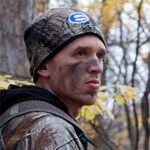 By
By 